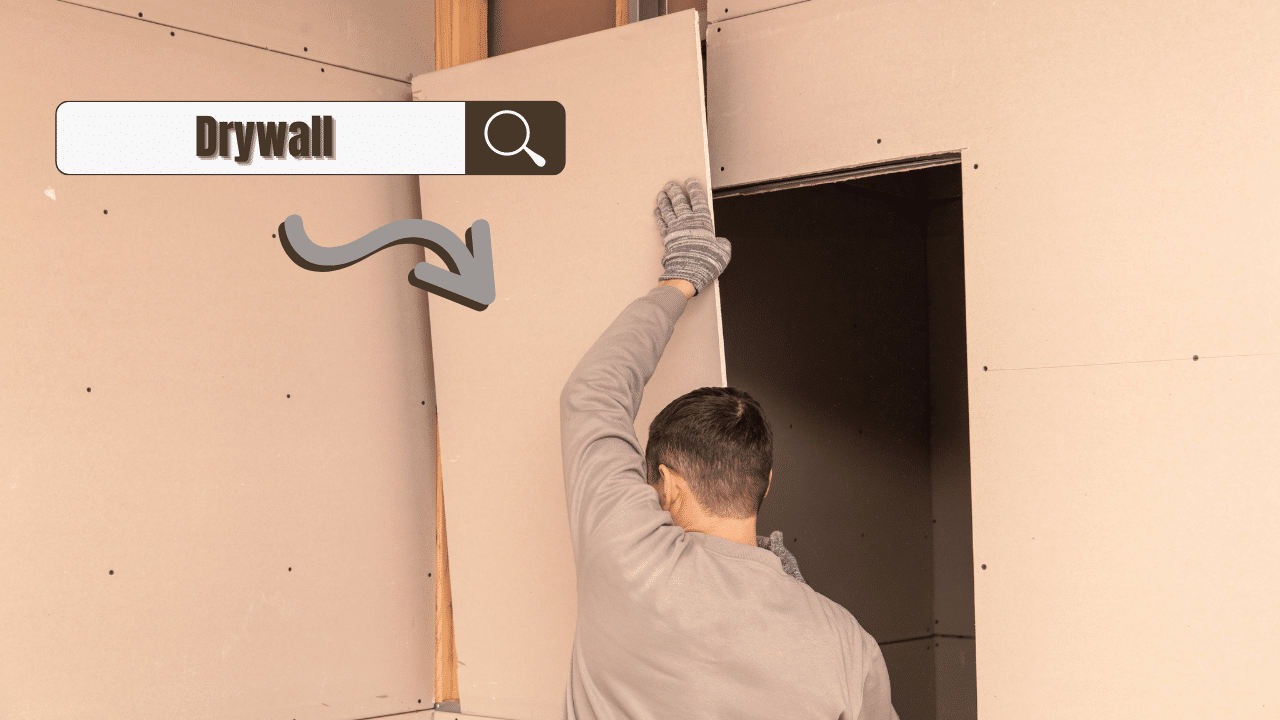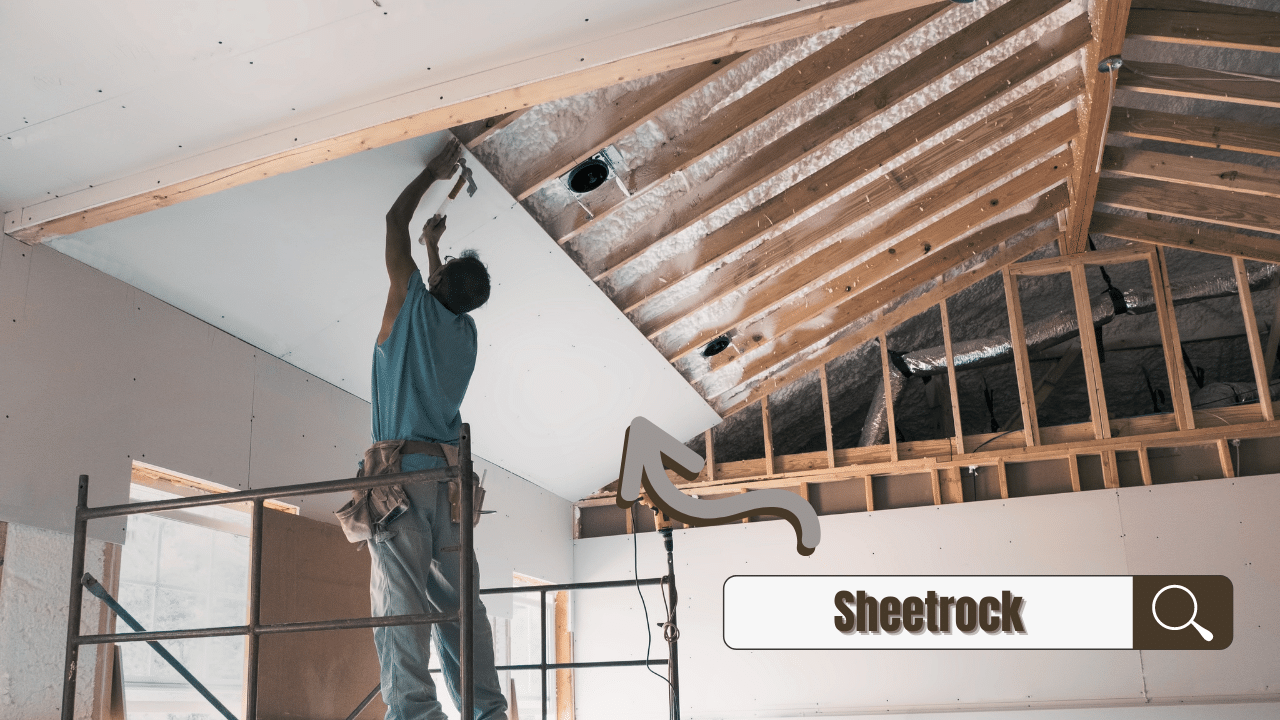Veteran home improvement and construction enthusiasts frequently hear the terms "drywall" and "Sheetrock" – often interchangeably. For the record, both terms refer to the paneling used on the interior walls.
Don't worry; we'll cover everything you need to know about the distinction between the two.
Are Sheetrock and Drywall the Same Thing?
Sheetrock and drywall almost refer to the same thing. The keyword here is: almost. Both are frequently used as construction materials for ceilings and walls. However, since a company patented the formula of Sheetrock– the main distinction lies there.
Sheetrock is a drywall brand name manufactured by the U.S. Gypsum Company. In short, the term is a registered trademark. The company provides consumer name brand drywall and drywall products, which are the same as generic drywall.
Several contractors in the country find it beneficial to buy Sheetrock products, while others do not mind the brand and are perfectly content with using generic brand drywall.
While Sheetrock is made for drywall, the same cannot be said for drywall. Certain drywall materials have high sulfur content – which can be harmful to use in buildings for public health reasons. Drywall is also famously called a gypsum board, plasterboard, or wallboard.
Nonetheless, it would be best to look at both materials to understand their distinction fully. Refer to the table below to get a quick overview of the differences between the two construction materials:
Difference | Drywall | Sheetrock |
|---|---|---|
Definition | A common construction material | A specific brand of Drywall |
Alternative Names | plasterboard, gypsum board, buster board, custard board, wallboard, and Sheetrock | None |
Usage | Interior walls and ceilings | Interior walls and ceilings, as well as exterior ceilings |
What is Drywall?

Drywall panels are made with gypsum plaster that lies in between thick paper before being baked to consistency. It is often used to install ceiling and interior walls– in place of the traditional lath and plaster.
This material goes by several other names: plasterboard, gypsum board, buster board, custard board, wallboard, and Sheetrock. Gypsum refers to a common type of soft, white stone. To make a plaster, gypsum material is ground into a paste mixed with binding chemicals and water.
Most notably, drywall plaster is the same as the ones used in art projects like Papier-mâché.
What makes drywall such a popular construction material? For one, the material is easy to install and cost-effective. It's no wonder why drywall grew to be a crowd favorite over the years.
Most likely, you may be surrounded by drywall as of writing.
Standard Dimensions
Usually, drywall sheets are made available in 4 feet width, 8 feet length, and a thickness of half an inch. Expect this material to weigh around 55 pounds, too.
4x8 is a standard sheet size for primary construction usage, similar to plywood and wall panels. It's also easier to transport around.
While smaller drywall sheets are easy to use, you may spend long hours in the construction process. In contrast, larger sheets will undoubtedly save you time, but it may be more expensive as you'll need multiple people to work on the project simultaneously.
Thin drywall sheets are used for existing wall coverage without the need to remove textures or plaster. Meanwhile, thicker drywall up to 5/8 and 3/4 inches are commonly used for commercial buildings. This material provides improved soundproofing features as well as fire resistance.
Types of Drywall
There are plenty of different drywall variations in the market today. Greenboard, for instance, is made with green paper and an oil-based additive. It makes the product resistant to any moisture damage.
Another example would be blue board (plaster baseboard), which also uses additives to make the drywall resistant to water damage or possible mold growth. (Related: Planning For Baseboard Installation? Here's What To Expect It To Cost)
If you want a room to have enhanced soundproofing and sound control, an acoustical gypsum board makes for an excellent choice. This material has damping polymers to limit outside sound transmission or noise-proofing the inside space.
There's also the eco-friendly Enviroboard, which is made from recycled materials such as waste fibers from newspaper or agriculture.
Drywall material may also be lead-lined for radiological equipment usage or even foil-backed to serve as a vapor barrier. AKA, drywall has flexible applications for almost everything you may ever need!
Limitations
Most interior rooms use drywalls. However, it does have some limitations. Water can quickly be absorbed by gypsum and make the drywall limited to areas that never get wet. You can use it in living, dining, and sleeping areas.
Drywall only has limited use in the kitchen, bathrooms, and places where the walls are vulnerable to getting wet Areas around bathtubs and showers, around sinks, and behind stoves are all likely to get wet. Drywall isn't used in these areas. If it is, it's covered with something waterproof.
Keep in mind that the areas that are likely to get wet include bathtubs, showers, around the sink and, behind the stove. Do not use drywall in the said places unless it is covered with something waterproof.
Drywall is also strictly for interior use. Never use it outside because heavy rain can make your gypsum wall swell and may warp back into a pile of rocks.
Advantages of Drywall
We've discussed how drywall is budget-friendly, convenient, and has certain safety features. It doesn't stop there.
Here are some other benefits of using drywall that you may want to consider:
What is Sheetrock?

Sheetrock is a famous drywall brand in the country. Thanks to its popularity, the term has often been interchangeably used to refer to generic drywall.
Like drywall, it’s a popular replacement to the lath and plaster method for constructing inner ceilings and walls. Some Sheetrock variants are particularly weatherproofed for exterior ceiling use.
The U.S. Gypsum Company coined the now-popular Sheetrock term, naming their drywall and other related products as such.
It doesn’t mean they’re the only company in the U.S. that manufactures drywall, though. Other famous drywall brand names are Allied Manufacturing, National Gypsum Company, and Titan Commercial Products.
Types of Sheetrock
Like standard drywall, Sheetrock is also available in different varieties:
There’s also a foil-back variety and moisture-resistant type to meet various applications. With that in mind, a mold resistant Fiberock panel is one excellent choice.
Sheetrock UltraLight Panels are lightweight, which helps you avoid dealing with sagging problems in the long run. There’s also the weather-resistant Sheetrock exterior gypsum ceiling board, ideal to use on the soffit side of canopies, carports, and eaves.
Lastly, you may also opt for highly durable Sheetrock panels that are resistant to wear and tear– including abrasions and indentations.
Manufacturing Process
The Sheetrock manufacturing process is similar to how standard drywall is created. The difference lies in the addition of certain chemicals that are unique to the Sheetrock brand.
The process starts with a gypsum plaster core that’s sandwiched between two paper sheets to make drywall. This core is composed of fiber, a foaming agent, minced gypsum crystal, and specific additives.
Instead of heavy paper, fiberglass mats are also commonly used in some instances.
Sheetrock Construction Techniques
Since both Sheetrock and drywall are similar, they follow the same techniques in the construction process.
Your contractors will need to cut the panel to the correct size, which is done by scoring the paper and manually breaking the core. Afterward, the newly-cut panels are fixed to ceiling joists or wall studs using fasteners, glue, nails, or screws.
To conceal the remaining seams, joint compound filler and tape are used. Further drywall sealing is done using veneer plaster– which gives your wall a smoother finish.
Advantages of Sheetrock
Since Sheetrock and drywall refer to the same thing, you can benefit from its fast installation in just a day or two. In contrast, the traditional lath and plaster method will take you at least a week or even more.
It also offers similar sound control and fire resistance features like that of regular drywall material.
Drywall and Sheetrock: Disadvantages
Both drywall and Sheetrock material can be at risk of damage when exposed to water. It will wick away and soften the plaster. Also, some variations may still be prone to unwanted mold– given both use paper.
17% of the material is believed to be wasted after cutting the sheets or panels into the correct size.
Some non-Sheetrock drywall brands are also observed to emit sulfur gases. If you use drywall that has high sulfur content, it may lead to a constant foul odor inside the living space, metal corrosion, and even harmful health effects in some cases.
